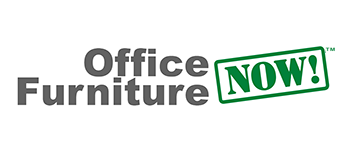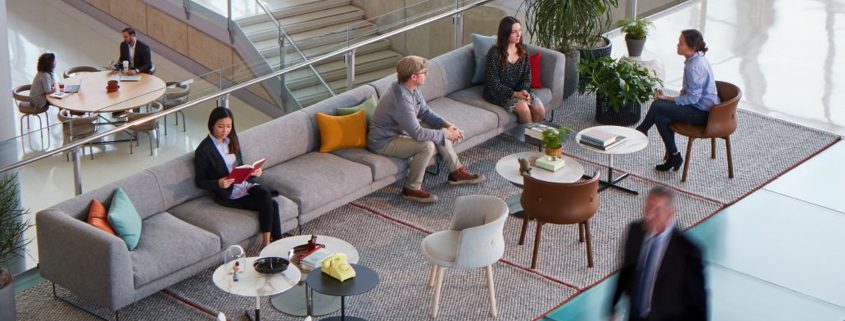The Right Culture For Attracting & Keeping Top Talent
Attracting and keeping top talent is as competitive as ever with the multitude of options available to highly skilled job seekers. Flexible opportunities, remote working and the perks of an intention-driven workforce are forcing the change. Competing for talent in this environment requires businesses to understand a new generation of workers that want the benefits of the job to coincide with their values. Creating an attractive space for recruitment requires managers to think outside the traditional box and carefully consider the perks their company can offer to entice top talent into their team.
Collaborative open plan environments attract and keep young talent for a reason. They provide the opportunities for collaboration, autonomy, and self-expression that have become the hallmark of forward-thinking business development. Fostering opportunities for staff to customize their workstations allows new hires to embed their personality into their workspace from the start which builds a sense of ownership and connectedness to the company vision. While this level of customization may not be necessary for every company, giving staff enough freedom to make a space their own, expand upon their skills, and develop new ones, will ensure deeper loyalty.
Makerspaces
Recruits are looking for companies that can cultivate their values and personal passions. One way offices can address this need is through the creation of onsite collaborative areas or makerspaces. These areas host materials like art supplies, tools, and workbenches, as well as printers and other equipment that can be difficult for individuals to invest in on their own. Creating something out of nothing and exploring your own interests are at the core of a makerspace.
These spaces can also be tooled to add to the job skill set by providing learning opportunities to expand your technical skills. They can become an incubator for hands-on learning environments, help with critical thinking skills and even boost self-confidence. Companies like Microsoft and Google provide these spaces to employees to maintain a sense of innovation in their culture. Implementing a creative space that allows individuals to work on their hobbies helps build unlikely connections between staff while they develop projects they’re passionate about. It also signals to potential recruits that their interests are valued.
Self-Development Opportunities
Learning opportunities and professional development programs are workplace advantages that the millennial workforce places heavy emphasis on. Managers can attract top talent by emphasizing the company’s willingness to help staff grow as leaders and add important skills to their wheelhouse. These statistics speak to young talent but should apply across the board to all generations on your staff:
- Sixty-three percent of Millennials believe their leadership skills are not being fully developed. The No. 1 driver for Millennials when evaluating job opportunities is the ability to progress and take on leadership roles.
- Only 24 percent of Millennials are “very satisfied” with the learning opportunities and professional development programs at work.
- Eighty-eight percent of Millennials wish they could have greater opportunity to start and finish work at the times they choose.
- Seventy-five percent of Millennials would like to start or more frequently work from home or other locations where they feel more productive; only 43 percent currently do so.
Self-development opportunities provide everyone with an equal playing field in their skill set. This could include hosting lessons from experts directly in your office or funding external courses. Progressive companies like Amazon cover up to 95 percent of tuition for their fulfillment center employees to take courses on in-demand topics. To enhance the effectiveness of these workshops, managers should provide staff with an in-office learning environment that is conducive to different types of learners.
Work-Life Balance
Workplaces that prioritize work-life balance stand to become more attractive to highly-skilled talent in the workforce. Creating this balance requires the careful synchrony of policies, culture, and space coming together in a cohesive package that promotes a balanced lifestyle. Managers can use policies like flexible working hours or benefits like travel credits and gym memberships to help staff stay healthy and motivated. Enabling new experiences is also a powerful way to draw in sought after talent. Inspiring your team to grow grows your business. Flexible work has been shown to:
- Improve engagement and productivity
- Help with competitive hiring
- Reduce operating costs for travel, energy consumption, and office space
- Reduce absenteeism
The Culture of Attraction
Attracting top talent is a challenge that managers will have to approach with a strong sense of empathy. Understanding the personal values and goals of potential hires as they relate to your company culture is a crucial part of any HR discussion before you even place the help wanted ad. Facility managers are uniquely positioned to demonstrate their culture and values directly through their office space by design. Some things to consider when designing a space with culture in mind include:
- Open Plan: Would your office culture benefit from an open floor plan, or from distinct offices and private wings? For example, in a law practice, it makes sense for partners’ offices to be closed off so that clients can be more comfortable speaking about personal manners. What level of professionalism and privacy does your culture need to portray to your clients?
- Engagement: What level of interaction do your employees have with each other? Do associates need to be communicating often or training other employees and interns? If employees are often collaborating on projects, open desking, smaller gathering spaces dispersed around the office, and a multi-tasking breakroom can encourage more engagement, teamwork and facilitate easier conversations.
- Flexible Meeting Spaces: Does your office need communal workspaces? Do different departments need to meet often for breakout sessions? Establishing flex spaces and conference rooms where different teams can meet and throw around ideas keeps information flowing and promotes brainstorming sessions.
- Vision, Mission & Community Involvement: It’s important to consider the specific values of your company. Is your office based on transparency? Do you have environmental goals, such as receiving your B Corp certification? Do you support local businesses and artists? Features like glass walls, plants, green space or a rotation of paintings by local artists can encourage certain values and remind employees and clients of the company’s priorities.
While getting and keeping top talent will always be unpredictable, planning your office ahead of those challenges is something designers and space planners can provide that gives you the solid foundation to attract the best skills out there for your need. When you are equipped with the right tools to satisfy any generational workstyle around your office productivity will be assured. There should always be room for improvement and we can help you find the best solutions.
 MEET JULIE SHEAFFER: Julie can provide you with answers and furnishing choices to fit your collaborative workspace needs. Her combined product expertise and application knowledge can help you create the best design for your office culture. Contact Julie at 888-910-3769 x129 or julie@officefurniturenow.com. For more inspiration visit us on Facebook, Pinterest, and Twitter!
MEET JULIE SHEAFFER: Julie can provide you with answers and furnishing choices to fit your collaborative workspace needs. Her combined product expertise and application knowledge can help you create the best design for your office culture. Contact Julie at 888-910-3769 x129 or julie@officefurniturenow.com. For more inspiration visit us on Facebook, Pinterest, and Twitter!



